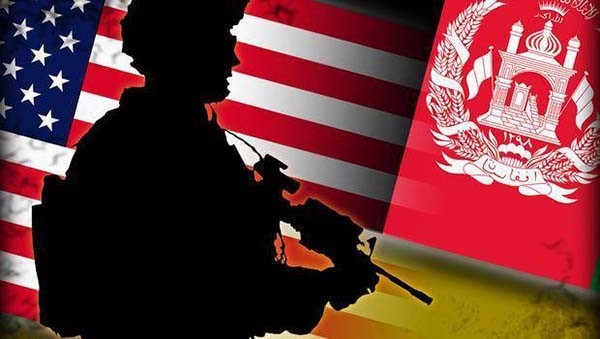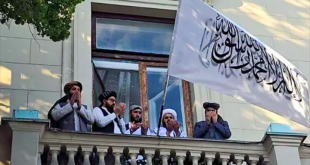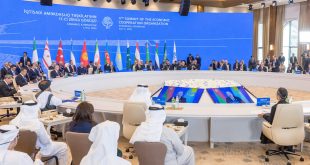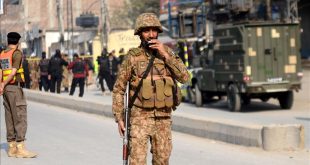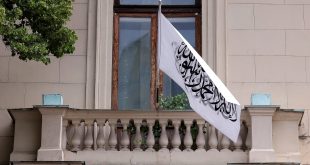NUG welcomed, but some Wolesi Jirga members and other experts have conflicting views on it
By Farhad Naibkhel-KABUL: The US President Donald Trump recently released a new strategy for Afghanistan, in which key issues including war on terror and elimination of militants’ safe havens in Pakistan were clearly mentioned. However, it doesn’t offer details about change to troop level, but reports suggest that more than 3,000 troops would be deployed to Afghanistan.
The most waiting Afghan strategy decision follows months of deliberation within the Trump Administration, involving top military commanders, political advisers and even enlisted veterans of the nearly 16-year war. Eventually, new strategy revealed, with more war as it has rare mentioned about peace and reconciliation. Even US clearly said that they would no longer involve in nation-building.
“In Afghanistan and Pakistan, America’s interests are clear. We must stop the resurgence of safe havens that enable terrorists to threaten America.” Trump said in his speech.
“We can no longer be salient about Pakistan’s safe havens for terrorist organizations, the Taliban, and other groups that pose a threat to the region and beyond.”
Supporting this, earlier, President Ashraf Ghani addressed the nation that it was time for Pakistan to change its approach and that Afghanistan has never taken steps to destabilize Pakistan.
Ghani added that Afghanistan’s war is not only rooted in the country, but that it is also affected by regional and global influences. Moreover he put weight behind US strategy toward Afghanistan, saying, “Both US’s interest and that of Afghanistan are secure in the new strategy”.
Ghani also made it clear that in the past two years there have been tough, but now with the new US strategy in place, Afghanistan has a better idea of its future.
Reacting to Trump’s strategy for Afghanistan, Chief Executive, Abdullah Abdullah said: “Our message to our neighbors is that the new US policy is a chance for them (countries in the region) to utilize and benefit from this opportunity.”
Trumps clearly mentioned that his administration “will no longer use American military might to construct democracy in faraway lands or try to rebuild other countries in our own image”.
“We are a partner and a friend, but we will not dictate to the Afghan people how to live or how to govern their own complex society. We are not nation building again. We are killing terrorists,” Trump said.
However, Trump termed Afghanistan as friend and partner, but he himself tweeted multiple times that Afghanistan was essentially a bad idea. In December 2015, he tweeted after a suicide bombing in Afghanistan that “We are being led to slaughter.” He also criticized President Barack Obama for leaving more troops in the country. So this is pretty major shift for Trump, who made his bones as something of a non-interventionist.
Former President, Hamid Karzai who has almost full knowledge of US policy as he worked with administration more than any others, strongly opposed the new strategy of the United States for Afghanistan and Central Asia.
“I very strongly oppose the new US strategy for Afghanistan as it is against peace and the national interest of Afghanistan,” former president said in a statement.
He furthered: “The strategy excludes brining peace and prosperity to Afghanistan, and is focused on more war and rivalry in the region. US must seek peace and stability in Afghanistan rather than extending conflict and bloodshed in Afghanistan and the region.”
This is not only former President that shows concern, while some analyst and experts believe that neither the troops increase nor military efforts will end the longest war in history of America.
Military analyst, Atiqullah Amarkhil, said he does not believe that increase in the size of troops is shuffled, of about 4,000 according to sources of the US congress, is enough to put the Taliban in a difficult situation.
With an increase still to be determined from its current contingent of 8,400 troops, but Trump aims is to put the Taliban on the ropes to reach a political solution to the conflict—something which has been steadily growing since the end of the NATO combat mission in 2015 that left Kabul with only 60 percent control of the country.
“When 100,000 US troops at the height of the deployment failed to defeat the Taliban, what are they going to change in these few thousand military personnel?” Amarkhil said, referring to the maximum number of troops deployed in 2001.
Furthermore he predicted that Taliban insurgents would increase their attacks amid at responding the new US strategy, unfortunately, with the Afghan troops as their (Taliban) main target.
Trump himself acknowledged in his speech that the Afghans, who took over from the international forces almost three years ago, will continue to carry on their shoulders the great weight of the conflict.
It has been the heavier weight that only in the first four months of the current year caused 2,500 dead and 4,200 wounded between the local troops.
Moreover, he called on US administration to give more equipment and state-of-the-art weaponries to the Afghan security forces, instead of spending as much on its own troops.
However, Ahmad Naveed, an analyst at the Afghanistan Regional Studies Center (RSC) said that troop increase was the best option on the table instead of complete withdrawal and privatization of war.
“What is more concerning is the implementation of strategy,” he said, adding that if words in strategy not translated into action, the result will be useless as previous one.
However, a member of Wolesi Jirga or Lower House of Parliament, Wadood Paiman backed US strategy, saying, “US had a clear message to Pakistan in the strategy, and this is a positive point.”
He believes that pressure on Pakistan would definitely have positive effect against insurgency and terrorisms.
If pressure could have applied on Pakistan in the past years, Afghan and US forces would have never been victimized in the war on terror—because terrorists come from Pakistan and fight against forces.
Pointing toward deploying additional foreign troops, he said: “It will be better for the US to equip Afghan security forces with modern weapons, instead of sending more troops.”
According to him, pressurizing Pakistan, and equipping Afghan forces is the only way to overcome current challenges throughout the country.
“New strategy has focused only to prevent Taliban insurgents from “moving forward” while Washington ignored other important needs of Afghanistan,” Director for the Center for Strategic and Regional Studies (CSRS), Abdul Baqi said.
“The US strategy is like a killing poison for the Afghans that will prolong the war for years without any party winning,” he said, adding, “It will only bring more bloodshed.
The only good point in the strategy according to Amin, is pressurizing of Pakistan to stop harboring and supporting terrorist—a terrorist group that attacking Afghan soil.
However, another member of Wolesi Jirga of the Parliament, Qazi Nazir Ahmad Hanafi called on US to fulfill commitments made in Bilateral Security Agreement (BSA) signed with Afghanistan government, and then follow the new strategy.
“Based on BSA contents, US must defend Afghanistan against stranger’s raid, often Pakistan interfered and raided, something even Pakistan officials confessed, but US forces never took action.”
Increasing troop won’t be solution, US have to boost up intelligence operative and target networks of terrorist if want to bring peace, he added.
Moreover, a female member of Wolesi Jirga of parliament, Shikiba Hashimi, said “US new strategy has different positive points such as strengthening of Afghan army and Afghan Air Force, which defiantly make Afghan security forces more capable to eliminate insurgents nationwide.
Another good thing according to her is putting pressure on Pakistan to renounce backing terrorist outfits.
“Pressure on Pakistan should not be remained in the paper only just like in the past years. US have to implement its words and demolish terrorist save havens there in Pakistan.”
She furthered, if US implement its strategy honestly, there would be very sooner to reach a durable peace and stability in the war-hit country.
One thing the she raised criticism toward was not mentioning the name of Islamic State (IS), which is also known as Daesh terrorists in the strategy. “Daesh is another big threat beside the Taliban insurgents,” she said, adding “suppose if US eliminate Taliban insurgents, but remain silent over Daesh, insurgency would still continue as both are terrorists.”
There has been two different points visible in new US strategy, said a political expert, Sayed Dawood, adding, one pressuring Pakistan, and the second involvement of India in security issues, beside the country playing role in construction and development of Afghanistan.
These two points differentiate US new strategy from what there were during past 16 years, he added.
He believe this new strategy also listed some responsibilities for the National Unity Government (NUG), as US already said they would no longer engaged in nation-building process.
According to him, the message has submitted some homework to the leaders of the NUG, and they have to fulfill in the best manner when it comes to the matter of internal affairs.
However, the Ministry of Defense (MoD) termed the new US strategy has a very much useful as it showed strong commitment in strengthening Afghan security forces.
MoD Spokesman, General, Dawlat Waziri said the new US strategy has different positive points which can be helpful in reaching durable peace and stability.
“Ministry of Defense (MoD) already made a four years plan for developing of Army Forces, which this program is in progress very well, and even there is already a good result,” he added.
Another positive point is to pressurize Pakistan, and its unprecedented move by the US at big platform, asking Pakistan to shun supporting insurgent outfits.
There are both, positive and negative viewpoints. But the main question is to see whether US implement its strategy or it’s mere in the piece of paper with no outcome.
Mansoor Faizy, Editor-in-Chief of Afghanistan Times, also contributed to this report
 Afghanistan Times
Afghanistan Times
